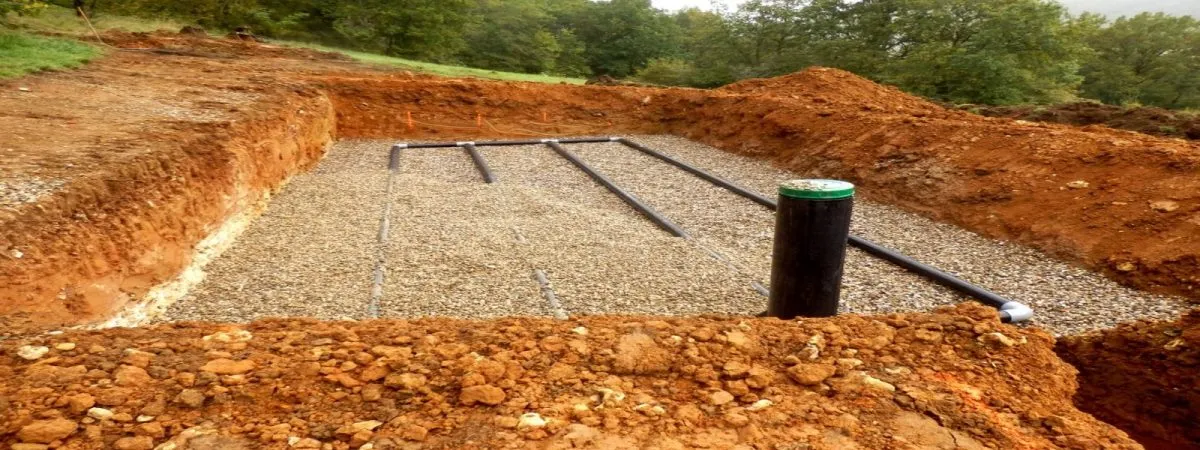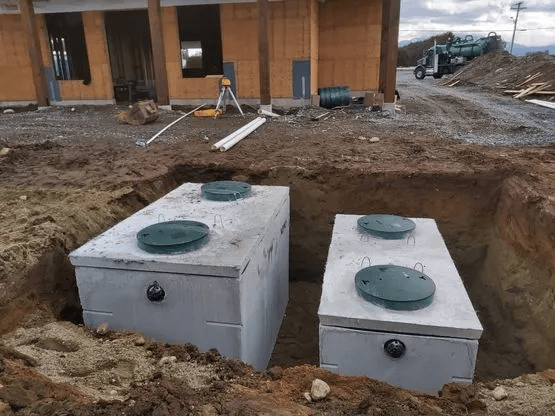In the picturesque landscapes of Ontario, Efficient Septic Design and sustainable wastewater management is crucial, especially for those residing in rural areas, small communities, or owning cottages. Serve as onsite wastewater treatment units, Septic systems are integral to maintaining the ecological balance and public health in these regions.
Key Takeaways
- Septic systems are vital for wastewater management in rural Ontario.
- Understanding the components and maintenance of septic systems is essential.
- Awareness of Ontario’s regulations and innovative septic solutions enhances system efficiency.
Understanding Efficient Septic Design in Ontario
Septic systems in Ontario play a pivotal role in rural wastewater management, compensating for the absence of municipal sewers. These systems, often unseen, handle everything from toilet flushes to kitchen wastewater.
Key Components of a Septic System
A typical septic system in Ontario comprises a septic tank and a leaching bed. The tank, usually concrete, is a two-chambered container that separates solids from the wastewater. The leaching bed then treats the effluent through a series of gravel-filled trenches.
Working of Conventional Septic Systems
In these systems, the wastewater journeys from your home to the septic tank, undergoing initial treatment. Post this, the liquid part moves to the leaching bed, undergoing further purification before rejoining the groundwater.
Maintenance and Upkeep of Septic Systems
For septic systems in Ontario, maintenance is a homeowner’s responsibility. This includes regular inspections and pumping and being mindful of what goes down the drains. Efficient water usage is also key to preventing system overload.
Alternative Septic Systems in Ontario
In certain sensitive areas, alternative treatment systems are necessary, providing enhanced treatment compared to conventional systems. These systems are especially crucial near drinking water supplies and where conventional systems are unfeasible.
Challenges with Efficient Septic Design in Ontario
In Ontario, an estimated 25% of septic systems have surpassed their 30-year design life, posing risks to ground and surface water quality. Such aging systems demand expert evaluation and potential redesign to meet environmental standards.
Understanding Ontario’s Regulations for Septic Systems
Compliance with the Ontario Building Code is mandatory for all septic systems in the province. This includes adherence to specific design and installation standards, as well as regular inspections and maintenance requirements.
Innovative Efficient Septic Design Solutions in Ontario
Elmid Design Inc., a professional engineering firm, specializes in providing innovative septic design solutions tailored to Ontario’s unique environmental and regulatory landscape. Our services ensure that your septic system complies with provincial regulations and aligns with sustainable practices. Learn more about our Septic Design Services.
FAQs about Efficient Septic Design
in Ontario
This section would include common questions about septic system design, installation, and maintenance, providing readers with quick, accurate answers.
Conclusion
Understanding the intricacies of septic design in Ontario is crucial for environmental sustainability and public health. Through careful design, regular maintenance, and adherence to regulations, homeowners can ensure their septic systems function efficiently for years.
The Importance of Regular Inspections
- Discuss the significance of routine inspections for septic systems in Ontario, emphasizing the prevention of major issues and compliance with local regulations.
Innovations in Septic System Technology
- Highlight advancements in septic system technology and how they benefit homeowners in Ontario, focusing on efficiency and environmental protection.
Choosing the Efficient Septic Design for Your Property
- Offer guidance on selecting the most suitable septic system design based on property size, soil type, and environmental considerations.
Septic System Myths Debunked
- Address common misconceptions about septic systems, clarifying facts for Ontario homeowners.
The Role of Professional Septic Design Services
- Elaborate on the importance of engaging professional services like Elmid Design Inc for septic system design and installation.
FAQs on Septic Design in Ontario
How do you design a septic system?
Designing a septic system involves assessing the property’s soil type, size, and topography to determine the most efficient system type and layout. This process requires professional expertise to ensure compliance with environmental and health standards.
Can I design my septic system in Ontario?
In Ontario, septic system design typically requires a professional engineer or a certified designer due to the complexity of regulations and technical requirements.
What are the rules for septic systems in Ontario?
Septic systems in Ontario must comply with the Ontario Building Code, which outlines specific design, installation, and maintenance standards. These rules ensure systems operate safely and effectively, protecting public health and the environment.
What are the design criteria for a septic tank?
Key criteria for septic tank design include adequate capacity based on home size, a two-chambered structure for efficient waste separation, and regular maintenance and inspection provisions. Materials and construction must meet specific standards for durability and environmental safety.






